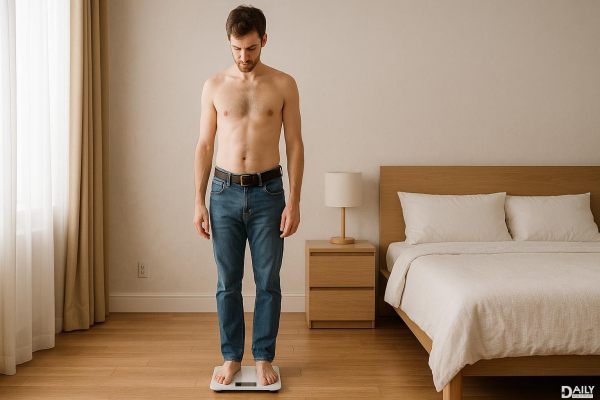If you're a 5'10" guy wondering what your ideal weight should be, the short answer is: it depends. There's no one-size-fits-all number because factors like muscle mass, body composition, and overall health play a huge role. But generally speaking, a healthy weight range for a 5'10" male falls between 149 and 183 pounds, according to standard BMI guidelines. That said, BMI isn't perfect—it doesn't account for muscle versus fat—so let's break this down in a way that actually makes sense for real life.

BMI (Body Mass Index) is that classic height-to-weight ratio you've probably seen a million times. It's a quick way to categorize people into underweight, normal, overweight, or obese ranges. For a 5'10" dude, the "normal" BMI range (18.5 to 24.9) translates to roughly 149–183 pounds. But here's the catch: BMI doesn't distinguish between a ripped athlete and someone with higher body fat. A muscular guy could easily tip into the "overweight" category even if he's in peak shape. That's why BMI should be taken with a grain of salt—it's a broad tool, not the final word on your health.
If you're hitting the gym regularly, your weight might not tell the full story. Muscle is denser than fat, meaning a lean, muscular guy at 190 pounds could be healthier than a softer guy at 170. Instead of obsessing over the scale, consider body fat percentage. For men, a healthy range is typically between 10% and 20%. If you're athletic, you might sit on the lower end, while a more average guy might hover around 15–18%. Tools like skinfold calipers, DEXA scans, or even smart scales (though less precise) can give you a better picture of your body composition.
Another way to gauge whether your weight is healthy? Check your waistline. Even if your BMI is "normal," carrying excess belly fat can increase your risk for heart disease and diabetes. For men, a waist circumference over 40 inches is considered high risk. So if you're 5'10" and your pants are getting snug around the waist, it might be time to reassess your diet and exercise habits—regardless of what the scale says.
Your ideal weight isn't just about looks—it's about how you feel and function. A construction worker or avid runner might naturally sit at a higher weight due to muscle mass, while a more sedentary guy might need to stay toward the lower end of the BMI range to avoid health risks. Think about your daily energy levels, mobility, and how your body performs in your favorite activities. If you're feeling sluggish or achy, your weight (or body composition) might need tweaking.
As men get older, metabolism slows down, and muscle mass tends to decrease unless actively maintained. A 25-year-old at 180 pounds might be solid muscle, while a 55-year-old at the same weight could be carrying more fat. Adjusting your diet and exercise routine as you age can help you stay in a healthy range—even if that means the number on the scale creeps up a bit over time.
Instead of fixating on a single "ideal" number, focus on sustainable habits: strength training to maintain muscle, cardio for heart health, and a balanced diet rich in whole foods. If you're unsure where to start, a registered dietitian or personal trainer can help tailor a plan to your body type and goals. And remember, health isn't just about weight—it's about feeling strong, energized, and confident in your own skin.
At the end of the day, the "ideal" weight for a 5'10" male isn't a rigid number—it's a range that supports your health, lifestyle, and personal goals. Whether you're aiming to bulk up, slim down, or just maintain where you're at, the key is consistency and self-awareness. So ditch the one-size-fits-all mindset and focus on what works best for your body.
























